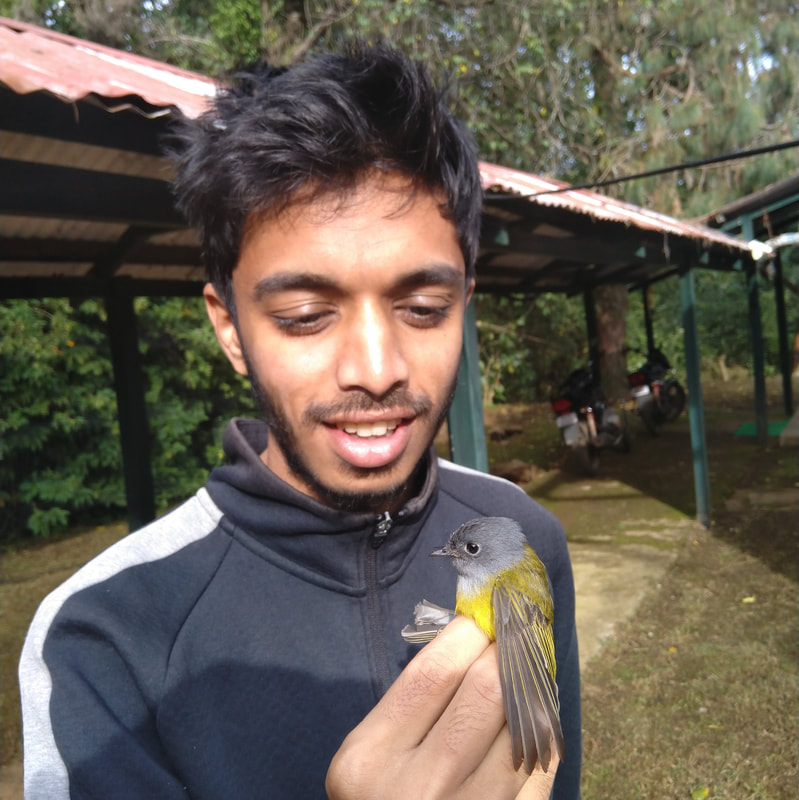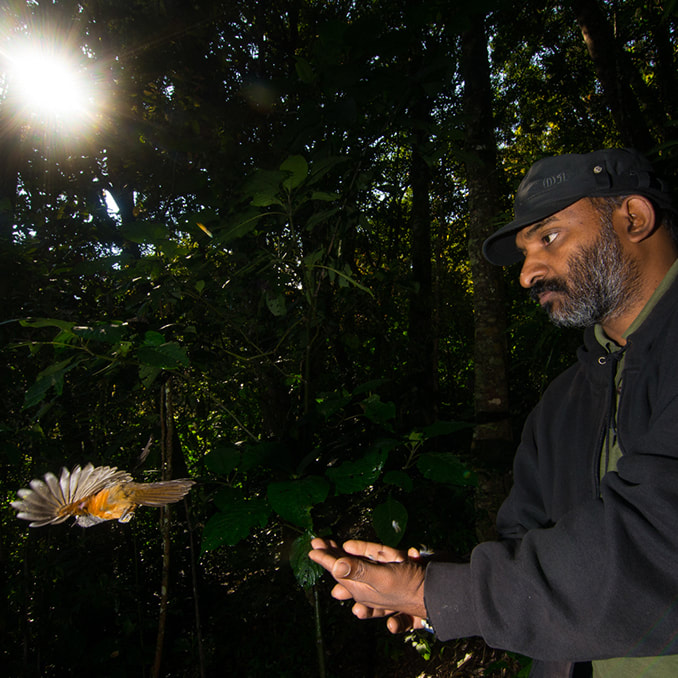Project: Biogeography of peninsular birds.
|
Description: Birds are thought to be ubiquitous, but many understorey passerine birds may not even cross sharp habitat features. But not all species in a community are similarly impacted; rainforest specialist species may be more impacted by mountain barriers than generalists. While observations on biogeography have led to fundamental concepts in evolution, recent phylogenetic tools have been able to examine non-intuitive relationships, date divergences, and reveal cryptic diversity. Even with India’s high bird diversity and much historical natural history information, we still do not know which biogeographic barriers (mountains or rivers) within the peninsular India limit genetic connectivity and drive speciation. Modern phylogenetic data, at present nonexistent for most peninsular birds, are required to test various hypotheses on colonization and biogeography.
The popular biogeographic paradigm, the ‘Satpura Hypothesis’ (Hora 1944), suggests that the Satpura mountains were a mountain link for North-east Indian species to colonize the southern mountains. While many aspects of this hypothesis have been challenged, the idea of connectivity through Satpuras remains popular, though largely untested. Alternate hypotheses include a role of historical climate (Karanth 2003) and alternate routes of colonization (Abdulali 1949). A previous examination (Ramachandran et al 2016) of major biogeographic divides in the peninsula based on phenotypic differences (subspecies) of birds revealed that the Goa Gap in the Western Ghats and the Godavari River in the Eastern Ghats were the major biogeographic divides, along with 11 other minor divides that can serve as prospective genetic sampling locations. We now have a framework of locations and a list of all bird species with maximum differentiation to test various evolutionary hypotheses. This study is collecting fine-scaled genetic data from passerine bird species across several geographic units spread over 5,000 km in the peninsula (south of Tropic of Cancer). In the lab, we are generating mitochondrial data to compare with global phylogenies, while also generating Next Generation Sequencing (NGS) data that will provide more power to differentiate recent divergences. This study may yield new species, update the biodiversity inventory of this region, apart from providing insights into evolutionary and biogeographic processes in this landscape. The landscape connectivity data can also be used in conservation planning and assigning IUCN threat levels. |
Study site: Odisha, Madhya Pradesh, Maharashtra, Karnataka, Kerala, Tamil Nadu and Andhra Pradesh.
Funding: SERB
Team:
|





